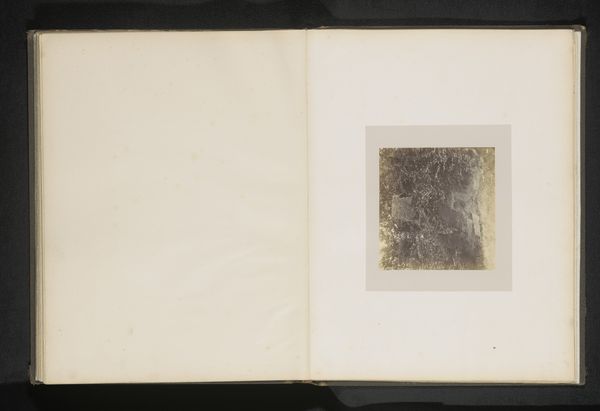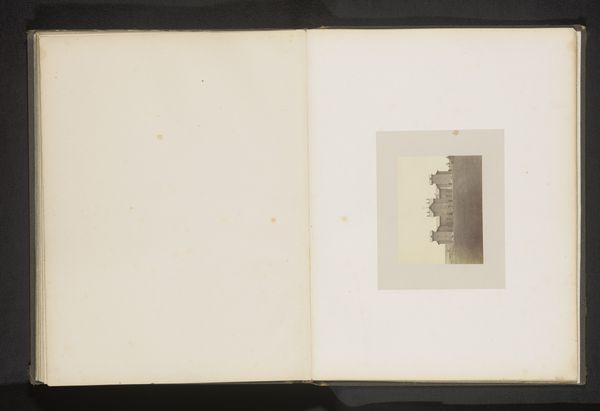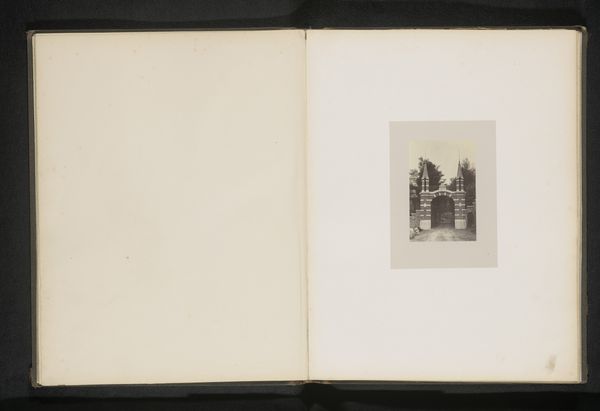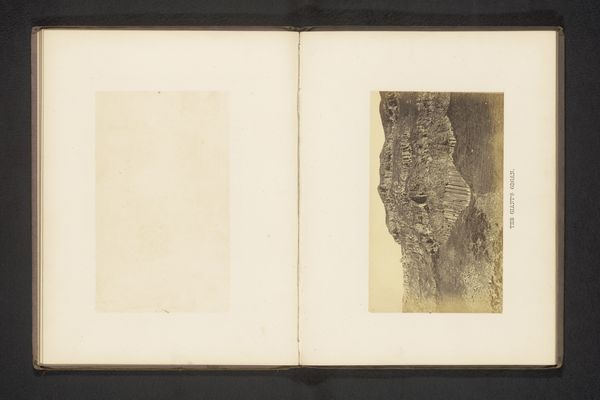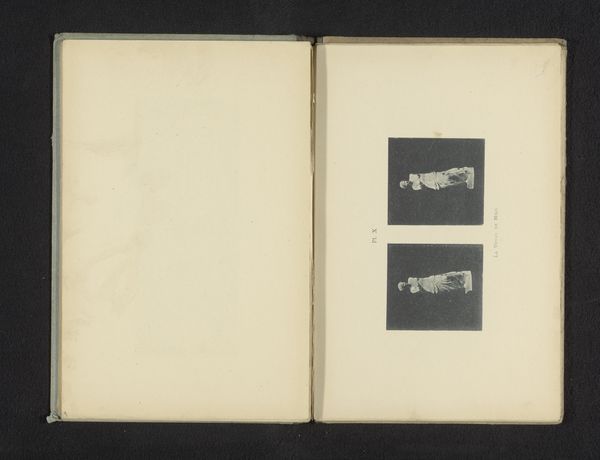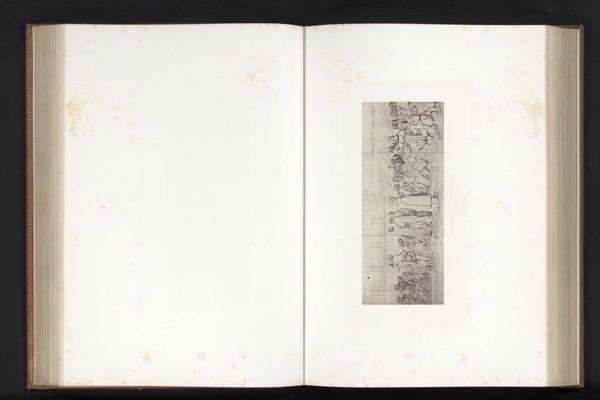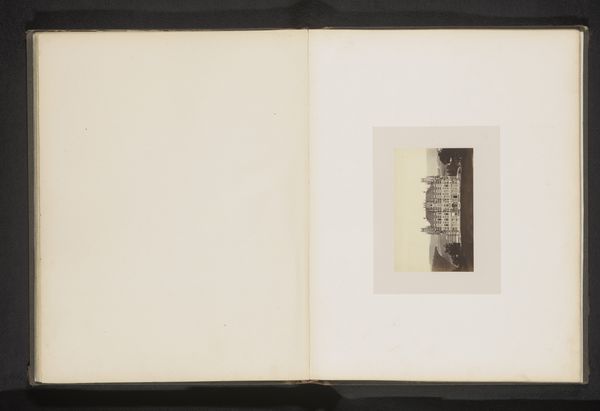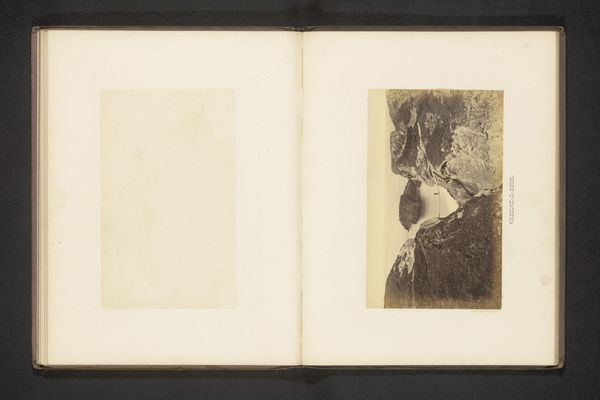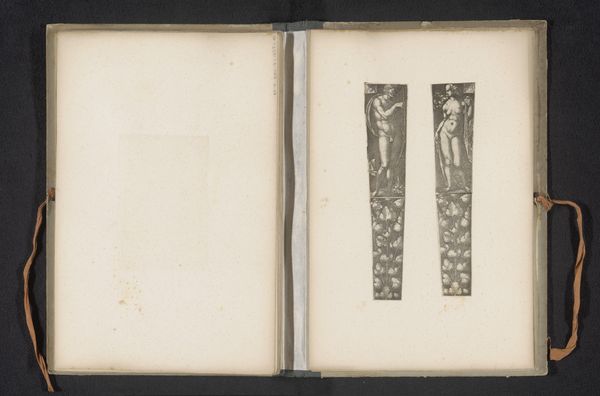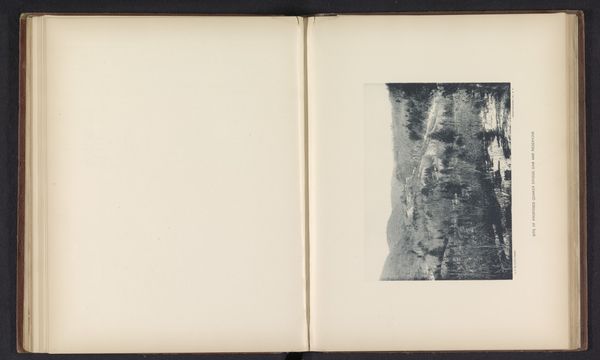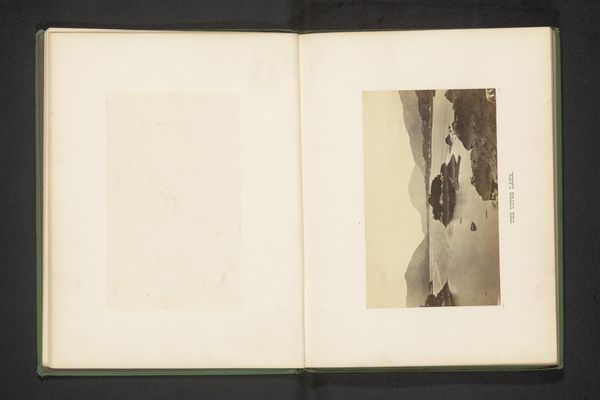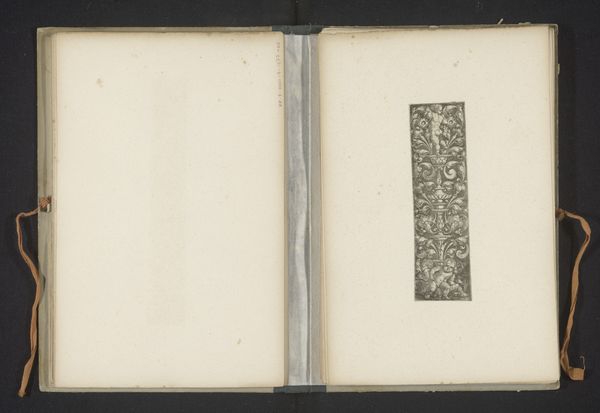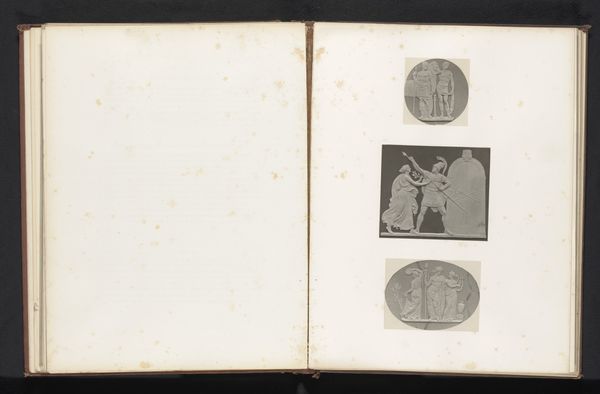
print, photography, gelatin-silver-print
# print
#
photography
#
gelatin-silver-print
#
paper medium
#
naturalism
Dimensions: height 242 mm, width 179 mm
Copyright: Rijks Museum: Open Domain
Curator: This is an image titled "Dwarsdoorsnede van een spons van de soort Poterion Neptuni," or "Cross-section of a sponge of the Poterion Neptuni species." We believe it dates from before 1870, created by Willem Cornelis van Dijk, and rendered in a combination of printmaking and photographic techniques including a gelatin-silver print. Editor: Well, the first thing that strikes me is the almost ghostly quality of this image. It’s stark, you know? A skeletal outline, kind of elegant but with a tinge of melancholy. Curator: Melancholy is interesting. I see it more as a representation of the 19th-century scientific pursuit, driven by Enlightenment ideals—classification, observation, and understanding nature's hidden structures. The cross-section implies a deeper analysis, literally cutting into the subject to reveal its inner workings. Editor: I get that, intellectually. But it’s also hard to separate it from, say, medical imagery of the period, which was often used to, ahem, reinforce social ideas about the body. It’s fascinating that this is just… a sponge. Curator: Precisely. Though seemingly innocuous, scientific illustrations like these did reflect existing societal biases, especially those tied to gender, race, and class. Naturalism was anything but neutral. Editor: It makes you think, doesn't it? The photographer probably saw something purely objective in the subject. But through today's lens, all kinds of cultural baggage gets unearthed along with it. It's so tempting to anthropomorphize, too - seeing it as some otherworldly being rather than a humble sea sponge. Curator: Exactly! I'm interested in the way the medium impacts this. Photography then was at once revolutionary and easily manipulated. Van Dijk could assert realism through the gelatin print, but selection and framing remain powerful artistic, even ideological, choices. Editor: Right! And framing it opposite that blank page...like it's waiting for words or interpretation. It's just asking you to fill in the gaps! Anyway, I see much more in it now – much deeper under the "sea," so to speak. Curator: It is the nature of historical inquiry that looking beneath the surface changes one’s perspective on the work.
Comments
No comments
Be the first to comment and join the conversation on the ultimate creative platform.
